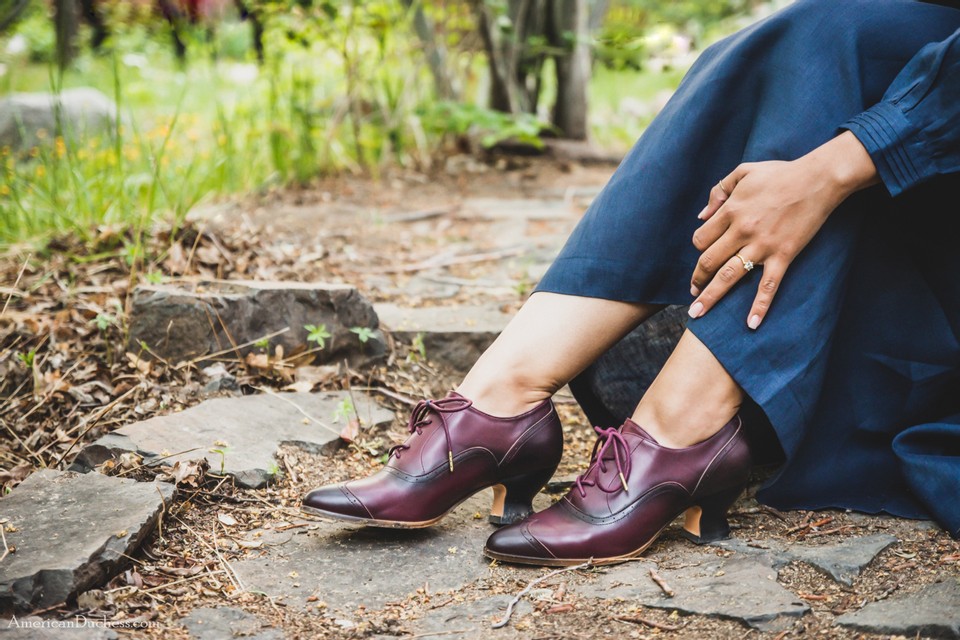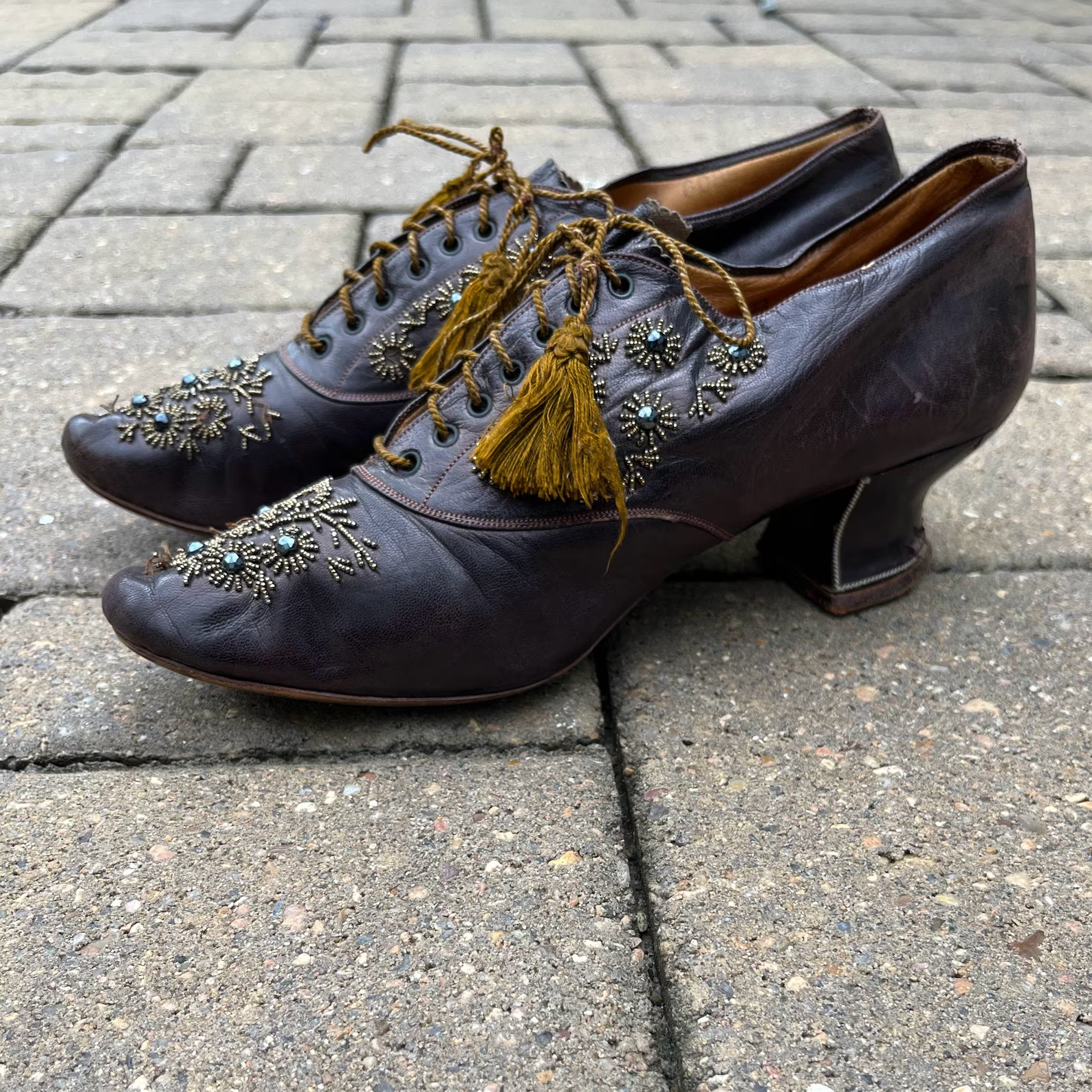Temperatures may still be high, but make no mistake about it- fall is just around the corner. Look into your crystal ball and you will see that wools and knits, autumnal color palettes, and fall footwear are in your future! And what could be better for fall fashions than oxfords?
It’s no secret that we are big fans of oxfords over here at American Duchess. We’ve made all manner of oxfords over the years; Edwardian oxfords, vintage oxfords, low oxfords and heeled oxfords, oxfords with broguing and oxfords without. Oxfords with peep-toes, oxfords with tongues, oxfords in smooth leather and Oxfords in suede…you get the idea, we love oxfords! In anticipation of wearing our favorite fall oxfords, we’re going into the origins of this ubiquitous style.





Just a small selection of the oxfords we offer!
Oxfords are defined as lace-up shoes with closed lacing (i.e the eyelet tabs are sewn under the vamp, as opposed to externally sewn on open-lacing tabs). The origin story of oxfords varies a bit. You may have heard that they originated in mid-19th century Scotland at Balmoral Castle (‘Balmoral’ is a common synonym for oxfords), or that they originated with the students at Oxford University in England. We do know that in the mid-19th century, low button or side-lacing boots called Oxonians were worn by men.

Around the 1840s, we begin to see text references to ‘Oxford shoes’ specifically. The shafts of Oxonian boots lowered, and lacing migrated to the front of the shoe, until the style resembled what we now think of as an Oxford shoe as opposed to the Oxonian boot. The other origin story of oxfords asserts that Prince Albert (Queen Victoria’s husband) wanted to have a pair of specialty boots made with closed lacing, to make walking easier around Balmoral Castle. Regardless, we can pinpoint the origins of oxfords to mid 19th-century Britain.
In the late 19th century and early 20th century, oxfords gained popularity as men’s footwear modernized. Lower shoes like oxfords were worn in addition to (or instead of) Victorian style dress boots, through the 1900s up to the 1910s. Up until this point, oxfords were considered a casual shoe, meant to be paired with sporting clothes and more casual attire. The rise of the leisure class and leisure activities made oxfords even more popular. Sporty trends like cuffed trousers were perfect for showing off one’s oxford shoes.


This is also the time period where oxfords were solidly established in womenswear. Women’s Oxfords in dressier iterations (think beads, embroidery, and wedding shoes) were worn as early as the 1860. Oxfords really exploded in popularity around the turn of the century in womenswear. Fin-de-siécle and Edwardian women’s fashion was heavily influenced by menswear, and heeled oxford shoes for women quickly gained popularity in the early years of the 1900s. Iterations of more evening-style oxfords existed, but this style was largely worn with daywear.



Like with men’s Oxfords, Edwardian ladies’ oxfords came in all manner of variations. Spool heels, French heels, or even lower Cuban style heels could be found on ladies’ oxfords. Variations in toe caps, seam lines, broguing patterns, and decorative trim could be found across the board. In the 1890s, the fashionable shape for oxford lasts resulted in a longer, more tapered toe shape, in contrast to the shorter vamps found in earlier styles. Dressier oxfords were less likely to have perforations and broguing, and had simple, sleek seam lines. Higher, slimmer heels were also considered dressier than lower, broader heels. Thinner turnsoles were more formal, whereas welted soles were indicative of daywear. There were even canvas oxfords, both with and without heels, meant for sporting (see our blog post about early tennis shoes).



As the 19-teens turned into the 1920s, ladies’ oxfords continued to be a mainstay of ladies’ fashion. Oxfords with intricate cutouts mimicked popular strappy styles, for evening wear and more formal occasions. Plain Oxfords with Cuban heels quickly became staple pieces for women’s wardrobes. Wingtips, heel foxing, broguing, and color variations with contrasting materials were popular for sporty attire through the 1920s.

There is so much to write about the history of oxfords! Oxfords remained mainstays of women’s fashion into the 1930s and beyond, from creative and fanciful surrealist designs, to saddle shoes, to military oxfords. In fact, we think a follow-up post about oxfords in the 1930s and beyond is needed, as this topic could take up an entire book!



Some 1930s and 1940s oxfords from the Shoe Icons museum…good stuff!
Do you have your favorite oxfords for fall yet? We have a plethora of options for you to choose from, whether you are interested in a sleek Edwardian style oxford like Londoner, or a versatile vintage option like Claire. Whatever your heart desires, we’ve got you covered!
Shop American Duchess Oxfords







